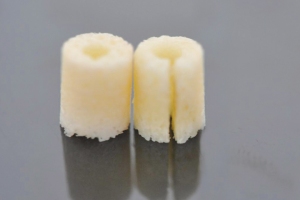Dr. Azadeh Khajavi has practiced as a dentist and oral implantologist in San Diego since 1994. A holistic dentist, Dr. Azadeh Khajavi has received a number of honors and awards, including an award for Excellence in Full Mouth Reconstruction. Dr. Amy Khajavi is especially skilled in areas of non-metal dental implants, including zirconia implants.
Dental implants may be composed of various materials, though metal and ceramic rank among the most commonly used. While both materials provide certain benefits, non-metal implants enjoy a number of important advantages.
Zirconia ceramic implants, for instance, are extremely durable and hypoallergenic. Unlike metal-based implants, zirconia implants are also noncorrosive. By eliminating the risk of corrosion, zirconia implants significantly reduce a patient’s chances for developing soft tissue irritation and related oral health issues. Corrosion can also necessitate a complete implant reconstruction.
Zirconia implants are not inserted as deeply into the jawbone as metal implants and generally entail a shorter healing period. Healing processes are further promoted due to the bio-compatible composition of zirconia ceramics, rendering the procedure tolerable for even the most sensitive mouths. To determine whether or not zirconia implants are a good fit for you, discuss implant technology and materials with your dentist.



